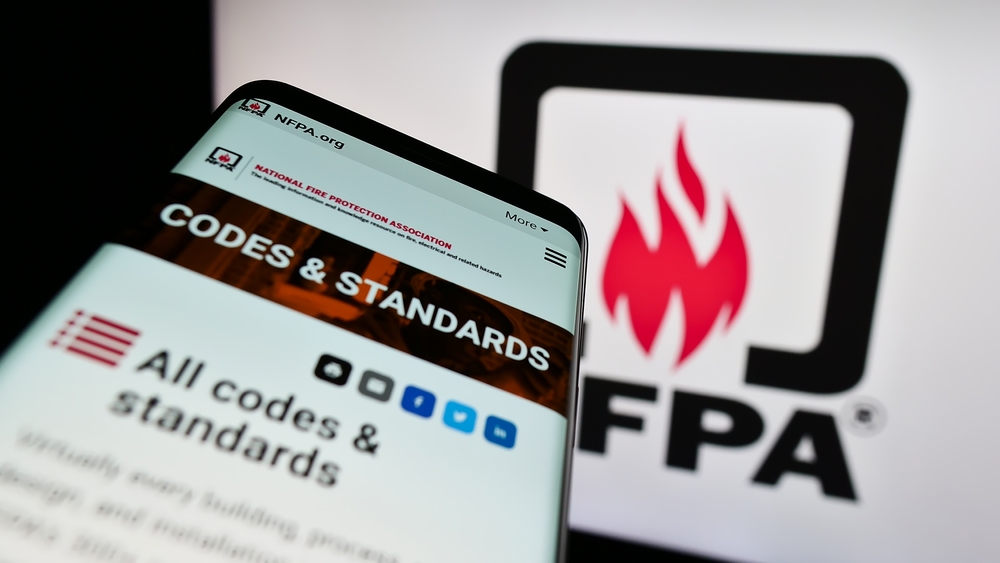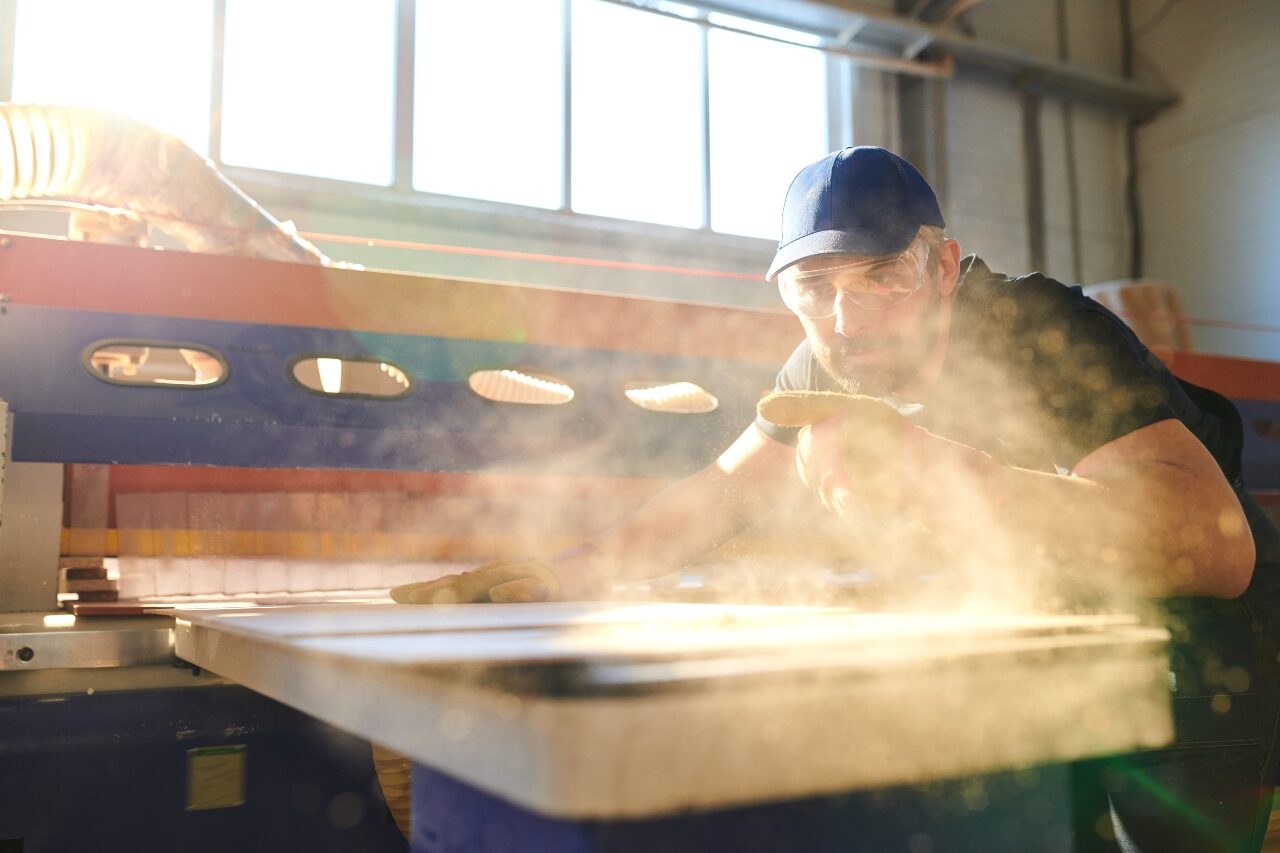Search
NFPA 660: The New Standard for Combustible Dusts

Hear ye, hear ye!
Have you heard about the impending release of NFPA 660?
The introduction of NFPA 660 will mark a significant step forward in the management of combustible dust hazards in all industries that handle or process combustible powders.
This new standard is in development to bring together – and simplify – all the existing industry or commodity-specific NFPA combustible dust standards into a single, consistent document. The aim? To increase clarity and applicability, and therefore overall safety. At Stonehouse, we like clarity and simplicity! We fully endorse this initiative, and this article provides a heads up for you on what’s coming with NFPA 660 in the countdown to publication.
What is NFPA 660?
NFPA 660 aims to consolidate NFPA 652 on the Fundamentals of Combustible Dust, with other industry/commodity-specific standards like NFPA 61, NFPA 484, and NFPA 654. This consolidation will therefore address the prevention and mitigation of combustible dust fires and explosions more effectively across industrial sectors as diverse as agriculture and food, metals, wood, chemical, and every other sector you can think of!
The need for NFPA 660 arises from the issues caused by the differences in the existing standards that can result in inconsistencies in safety procedures and hazard control for companies following industry/commodity-specific standards. By consolidating these standards, NFPA 660 seeks to reduce confusion and simplify the implementation of combustible dust requirements for owner/operators of facilities where combustible particulate solids and/or explosible dusts may be processed.
NFPA 660 is set to be released and adopted between late 2024 and early 2025. Stonehouse has been actively involved in the NFPA 660 Technical Committee. The public had an opportunity to review and provide feedback on the document until January 4, 2024.
Dr. Vahid Ebadat, CEO of Stonehouse, is a Principal Member of NFPA 660 Technical Committee through the membership of current NFPA 652, NFPA 654, and NFPA 655 Technical Committees. Additionally, Dr. Ebadat is a Principal Member of NFPA 77, Recommended Practice on Static Electricity and NFPA 91, Standard for Exhaust Systems for Air Conveying of Vapors, Gases, Mists, and Particulate Solids.
What’s Changing with NFPA 660?
The introduction of NFPA 660 is set to bring several key changes and improvements to the way combustible dust hazards are managed:
- Unified standards: By merging connected standards into a single document, NFPA 660 eliminates redundancy and conflicting information that could complicate compliance and combustible dust safety.
- Clear and consistent terminology: The new standard will unify the terminology used in different industries, thus facilitating communication across them and making generic training simpler to provide, for example.
- Updated Safety Procedures: NFPA 660 will update and refine safety procedures where appropriate, ensuring they convey current best (up to date) practice in combustible dust hazard management.
- Broader Applicability: The new standard aims to be more easily applicable to facilities that currently do not have their own industry/material-specific standards, giving NFPA 660 a broad appeal.
- Synchronized Updates: Consolidation into a single combustible dust standard makes future updates easier to achieve and will ensure constant alignment with best practice across industry; just one standard to change, and all industries are covered!
NFPA 660 Key Elements
Like its predecessors, NFPA 660 addresses familiar issues in the management of combustible dust hazards. The new standard provides methodologies to conduct in-depth Dust Hazards Analysis (DHA) to control risk, covering explosion prevention, as well as explosion protection measures – everything from dust control through ignition source avoidance – and design to protect people and plant in the event of particulate solid/dust fire, flash fire, and explosion. Furthermore, the new standard lays emphasis on regular maintenance and housekeeping procedures to avoid the accumulation of dust. NFPA 660 also requires properly structured training programs to educate workers involved in handling and processing combustible and explosible materials, and outlines procedures for developing robust emergency response plans to mitigate the impacts of dust-related incidents.
Impact on Industry
The introduction of NFPA 660 in many ways will draw attention yet again to the hazards of combustible dusts. Owner/operators still need to determine if their powders are combustible/explosible, and if so, perform a DHA, manage the identified hazards, train employees, have written safety management programs, and re-validate everything at least every 5 years or when there is change. This is quite familiar, of course, except this time it needs to be in accordance with the new, overarching standard.
Back from the Future
When we look back in the years ahead, we believe the introduction of NFPA 660 will be seen a landmark moment in combustible dust safety. By consolidating a myriad of guidance into a single comprehensive document, you will have all the tools necessary to effectively manage and mitigate the risks associated with combustible particulate solids and explosible dust – whatever your industrial sector. With any luck, this unified approach will lead to clearer compliance pathways, improved dust fire, flash fire, and explosion safety, and ultimately fewer incidents.
How Stonehouse can support you with NFPA 660 implementation
Stonehouse can help your organization transition and be compliant with the new NFPA 660 standard. This is how we can help your business.
Laboratory Testing of Combustible dusts
We can obtain all the dust fire and explosion test data you will require for your DHA. This often begins with simple, low-cost screening tests to determine if your powders are combustible or explosible. It can then go on to quantify dust hazards through measurement of explosion strength (Kst), Explosion pressure (Pmax), Minimum Ignition Energy (MIE), Maximum Safe storage Temperature and much more – all in our world-leading, ISO/IEC 17025:2017 accredited laboratories.
Compliance Audits and Gap Analysis
Stonehouse can audit and assess your existing safety practices against the new NFPA 660 standard. We can undertake gap analysis that will highlight any non-compliance, advising on and specifying things to change.
Under NFPA 660, it is essential to regularly update and review Dust Hazards Analyses (DHAs). As a process safety consulting firm, we are already revalidating existing DHAs under NFPA 652, whether that’s because of significant changes to process or materials – or simply because the existing DHA has reached its five years anniversary.
Training and education are two important elements of NFPA 660. Stonehouse delivers customized, in-person and virtual training on aspects of NFPA 660 – tailored to your specific powders, processes, and operations. These sessions will train your personnel on dust explosion prevention and protection, highlighting changes from old standards, and new requirements towards compliance and best practice in managing dust fire and explosion hazards.
Engineering and Technical Support
With the implementation of NFPA 660, engineering controls and safety systems may need to be added and/or modified. Stonehouse can provide technical assistance on design or re-design of explosion protection systems – explosion relief venting or isolation techniques, for example, as well as specifying and advising on explosion prevention. Note that we are independent consulting engineers and scientists and do not sell explosion protection equipment; we are always looking to find you solutions that are in your best, most cost-effective interests.
The new standard will, like previous dust explosion standards, require detailed documentation and reporting as part of compliance. Stonehouse can assist in the gap analysis and preparation of all related safety management programs, including DHA reports, operating procedures, and housekeeping practices, among others.
Once we have completed a project for you, we are always available to provide on-going advice and support with implementation and maintenance of the measures that you put in place to ensure safety from dust fire and explosion hazards. Just let us know the level of continuing contact and support you would like and we’re there for you.

Get in touch
To learn more about our expertise and services in dust explosion prevention & mitigation, call us at +1 609 455 0001 or email us at [email protected] today.
We also offer tailored virtual and in-company process safety training programs on Dust Explosions, Static Electricity and HAC (Hazardous Area Classification) and more. Find further information here.









